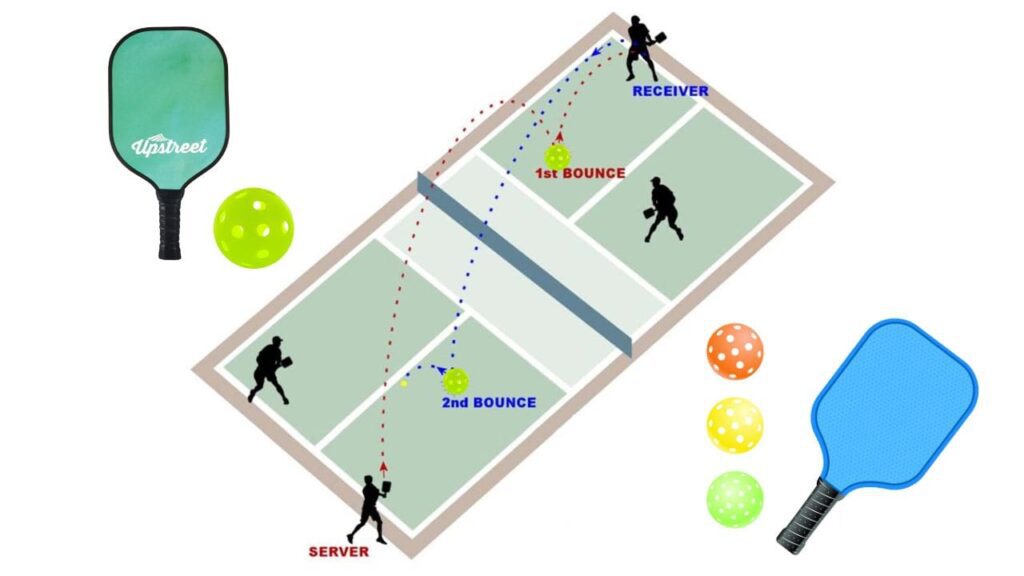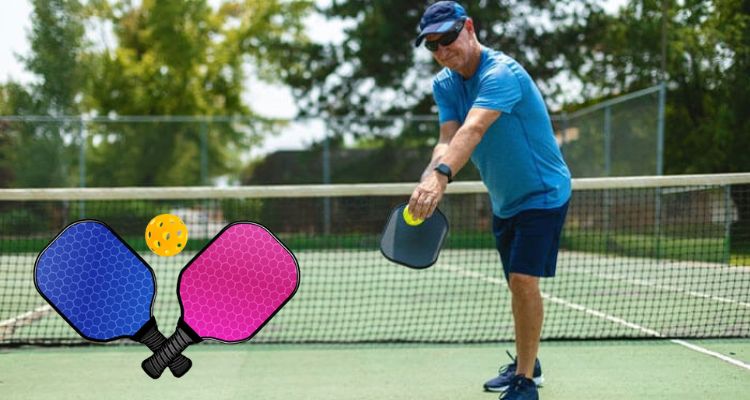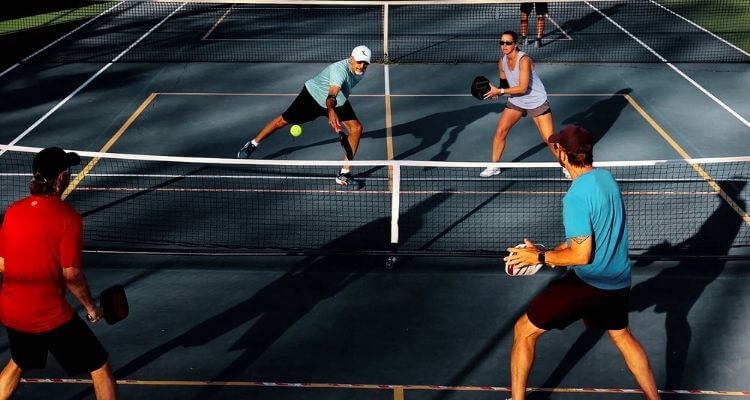Pickleball has taken the sports world by storm, captivating players of all ages with its unique blend of tennis, badminton, and ping pong. As the popularity of this dynamic and fast-paced game continues to soar, it becomes imperative for both beginners and seasoned players to grasp the nuances of Pickleball rules and regulations. In this comprehensive guide, we’ll dive into the intricate details of the game, breaking down the key rules that govern every thrilling match.

Understanding the Basics Rules:
Pickleball played on a compact court with a low net, brings its own set of rules and regulations. Let’s start with the basics.
Court Dimensions and Layout:
The standard Pickleball court is 20 feet wide and 44 feet long, with a non-volley zone (or kitchen) that extends 7 feet from the net on both sides. The net is situated at a height of 36 inches at the sidelines and 34 inches at the center. Players must serve the ball diagonally, ensuring it lands in the opponent’s diagonal service court. Unlike tennis, Pickleball allows for a double bounce, meaning the ball must bounce once on each side before players can engage in volleys.
Serving Rules:
The serve is a critical aspect of Pickleball, and specific rules govern its execution. The server must stand behind the baseline and within the confines of the sideline. The serve must be hit underhand, and the paddle’s contact with the ball should occur below the server’s waist. One unique rule in Pickleball is the fault system for serving. If the server commits a fault, such as stepping into the non-volley zone or failing to get the ball over the net, the serve passes to the opposing team.
Scoring and Rotation:
Now that we’ve covered the basics, let’s explore how scoring works in Pickleball and the rotation of players during a match.
Scoring System:
In Pickleball, players typically use a rally scoring system, where they score a point on every serve, regardless of the serving team. Teams play games to 11 points, and a victory requires a two-point lead. When the serving team wins a point, the server continues to serve but switches sides for each new server. In doubles play, both members of the team have the opportunity to serve before the serve switches to the opposing team.

Player Rotation:
Pickleball has specific rules regarding player rotation during a match. In doubles play, players must maintain a diagonal position on the court. The player at the right-hand service court serves first and continues serving until their team loses the point. Once the serving team loses the point, the service transfers to the opposing team, and the player in the left-hand service court serves.
Advanced Strategies and Gameplay:
As players progress in their Pickleball journey, mastering advanced strategies and understanding nuanced gameplay becomes essential.
Non-Volley Zone:
The non-volley zone, commonly referred to as the kitchen, adds a strategic layer to Pickleball. Players are not allowed to volley the ball (hit it without a bounce) while standing in the kitchen, and the opposing team gains a point if this rule is violated. Mastering the art of well-placed shots and quick footwork around the kitchen is crucial for successful gameplay.
Foot Faults:
Players must be mindful of foot faults, particularly when serving. Stepping on or over the baseline during a serve results in a fault, and the serve passes to the opposing team. Developing a consistent and accurate serve, while staying within the prescribed boundaries, is key to maintaining control during a match.
Etiquette and Sportsmanship:
Beyond the rules and regulations, Pickleball places a strong emphasis on sportsmanship and etiquette.
Code of Conduct:
Pickleball players are expected to adhere to a code of conduct that promotes fair play and respect for opponents. Unsportsmanlike conduct, such as verbal abuse or deliberate rule violations, can result in penalties, including loss of points or even disqualification from a match. Respecting opponents, officials, and the integrity of the game enhances the overall experience for everyone involved.

Calling Lines:
In the absence of officials, players are responsible for making line calls. Honesty and fair play are fundamental to the sport, and players are encouraged to acknowledge when the ball is out of bounds or a fault has occurred. This self-policing aspect fosters a sense of camaraderie and trust among players.
FAQs
Is it necessary to hit the ball on the bounce before hitting it in the air?
Yes, in pickleball, the ball must bounce once on each side before it can be hit in the air.
How is the winner determined in pickleball?
The first team determines the winner of a pickleball game to score 11 points, with a two-point lead.
Can a player step into the non-volley zone to hit the ball?
Yes, a player can step into the non-volley zone to hit the ball as long as it bounces on their side of the court first.
When a serve hits the net, what happens?
If the ball hits the net during a serve and lands in the correct service court, it is called a let serve and must be replayed.
Are there different rules for singles and doubles play?
Yes, there are some differences in the rules for singles and doubles play in pickleball, such as the number of serves allowed and the size of the court.
Conclusion:
As you embark on your Pickleball journey, a solid understanding of the rules and regulations will undoubtedly elevate your gameplay. From the dimensions of the court to the intricacies of serving and scoring, each aspect contributes to the unique and enjoyable experience that Pickleball offers. Remember, beyond the technicalities, sportsmanship, and respect for your fellow players play an equally vital role in the world of Pickleball. So, grab your paddle, hit the court, and revel in the excitement of this rapidly growing sport!




